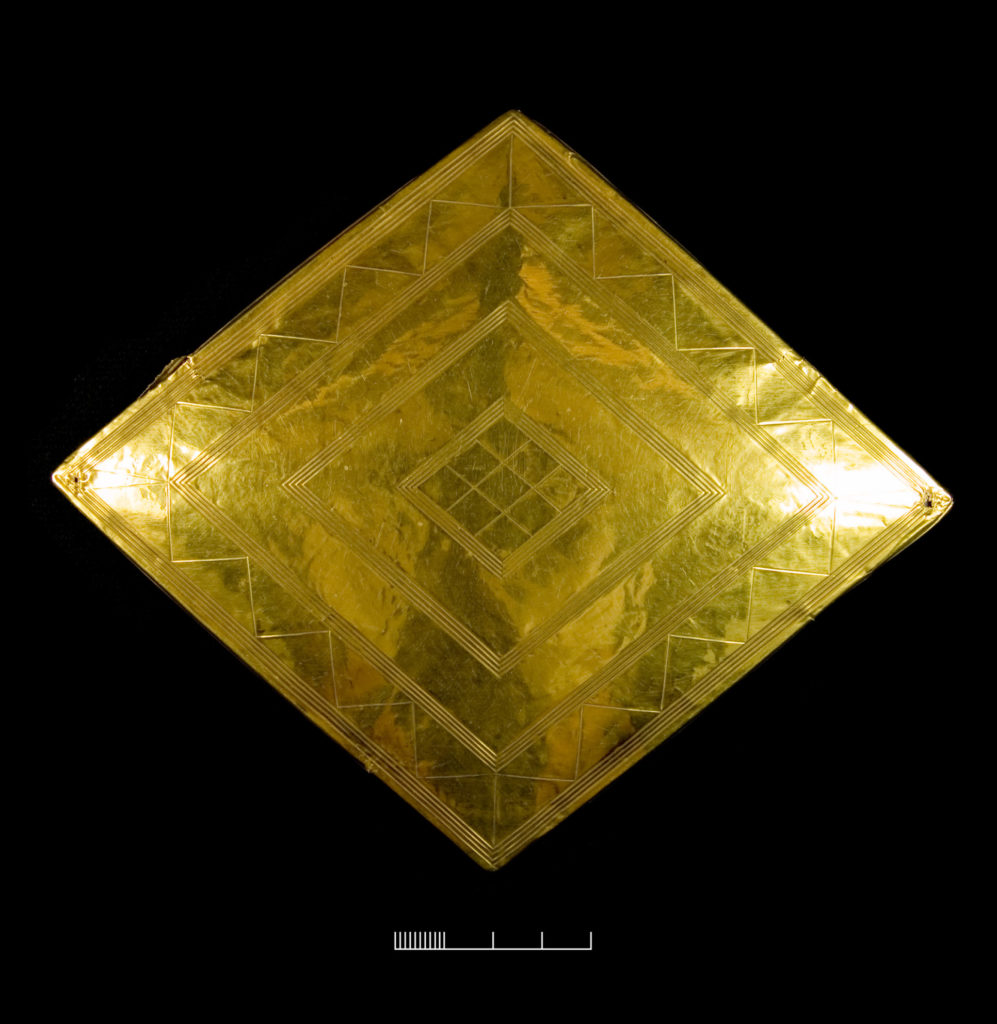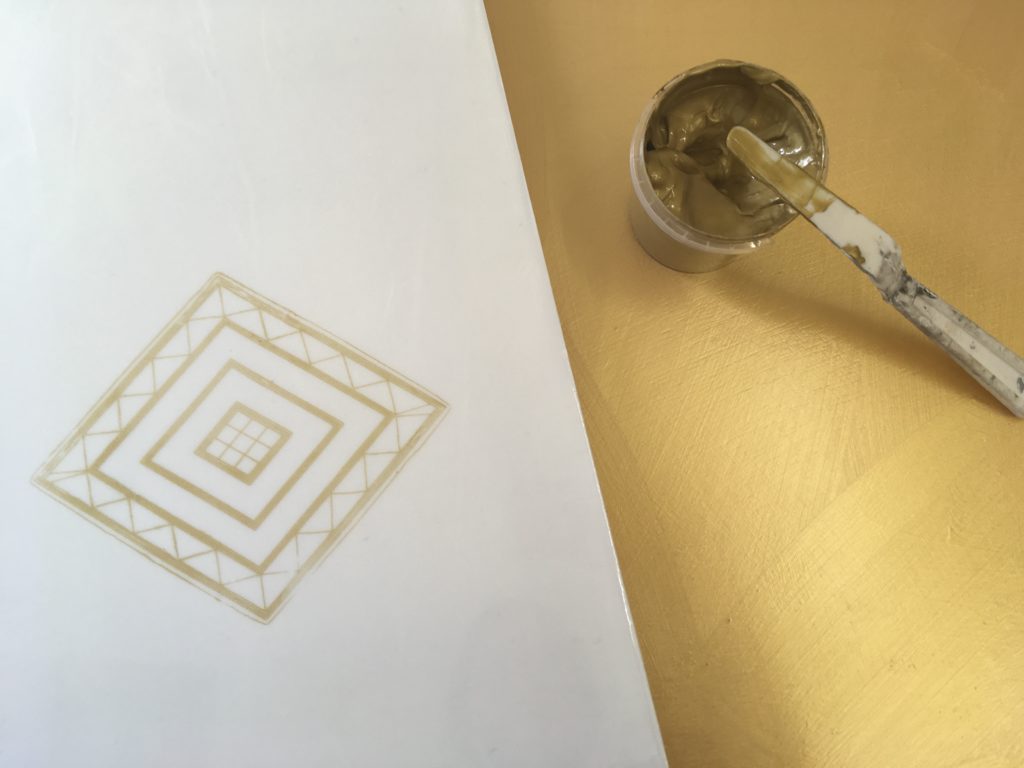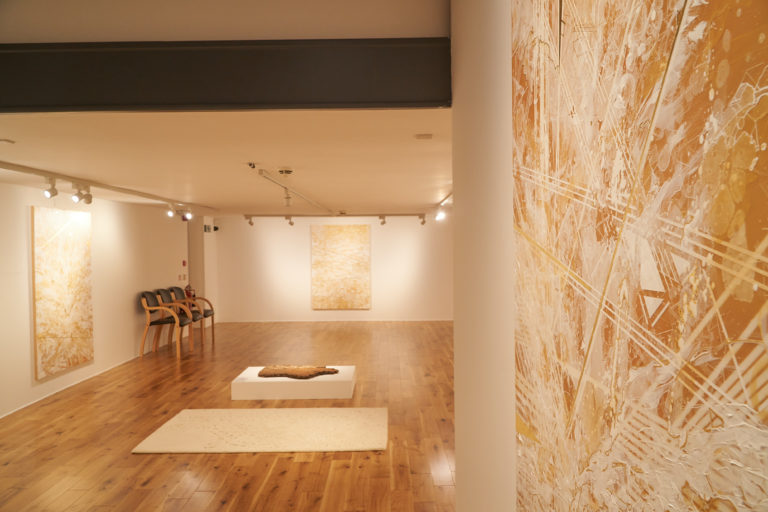
Home » Our work » Exhibitions » Alchemy exhibition » Chieftain
Ann-Marie James’ inspiration for the Chieftain series of artworks was the Bush Barrow lozenge at Wiltshire Museum.
This lozenge is the finest example of Bronze Age gold craftsmanship ever found. Made from sheet gold, only one millimetre thick, it is incised with intricate patterns, suggesting that whoever made it had a sophisticated knowledge of geometry.
Find out more about the Bush Barrow lozenge here.
“What interested me about the lozenge was the precision of its incised lines – this detailed geometry seemed mysterious given that it was made in the Bronze Age. The abstract nature of my paintings reflect this ambiguity, bringing an artefact from the past, in altered form, into the present.”
Ann-Marie began with a line drawing of the lozenge from which she produced a silkscreen. Using this, she began to build each painting, and through layers of print, drawing, paint and medium, the repetition of the printed lozenge gave way to a complex abstract composition.
Precise drawing intersected with splashes of ink and marks Ann-Marie made with her fingers and other implements. These paintings also include a final layer of drawing that has been gilded using 24ct gold leaf.



| Cookie | Duration | Description |
|---|---|---|
| cookielawinfo-checkbox-analytics | 11 months | This cookie is set by GDPR Cookie Consent plugin. The cookie is used to store the user consent for the cookies in the category "Analytics". |
| cookielawinfo-checkbox-functional | 11 months | The cookie is set by GDPR cookie consent to record the user consent for the cookies in the category "Functional". |
| cookielawinfo-checkbox-necessary | 11 months | This cookie is set by GDPR Cookie Consent plugin. The cookies is used to store the user consent for the cookies in the category "Necessary". |
| cookielawinfo-checkbox-others | 11 months | This cookie is set by GDPR Cookie Consent plugin. The cookie is used to store the user consent for the cookies in the category "Other. |
| cookielawinfo-checkbox-performance | 11 months | This cookie is set by GDPR Cookie Consent plugin. The cookie is used to store the user consent for the cookies in the category "Performance". |
| viewed_cookie_policy | 11 months | The cookie is set by the GDPR Cookie Consent plugin and is used to store whether or not user has consented to the use of cookies. It does not store any personal data. |

Males great bustards perform spectacular courtship displays, gathering at a ‘lek’ or small display ground to try to impress the females.
The great bustard has a dignified slow walk but tends to run when disturbed, rather than fly.
The hen-bird on display at The Salisbury Museum was one of the last great bustards to be eaten in the town!